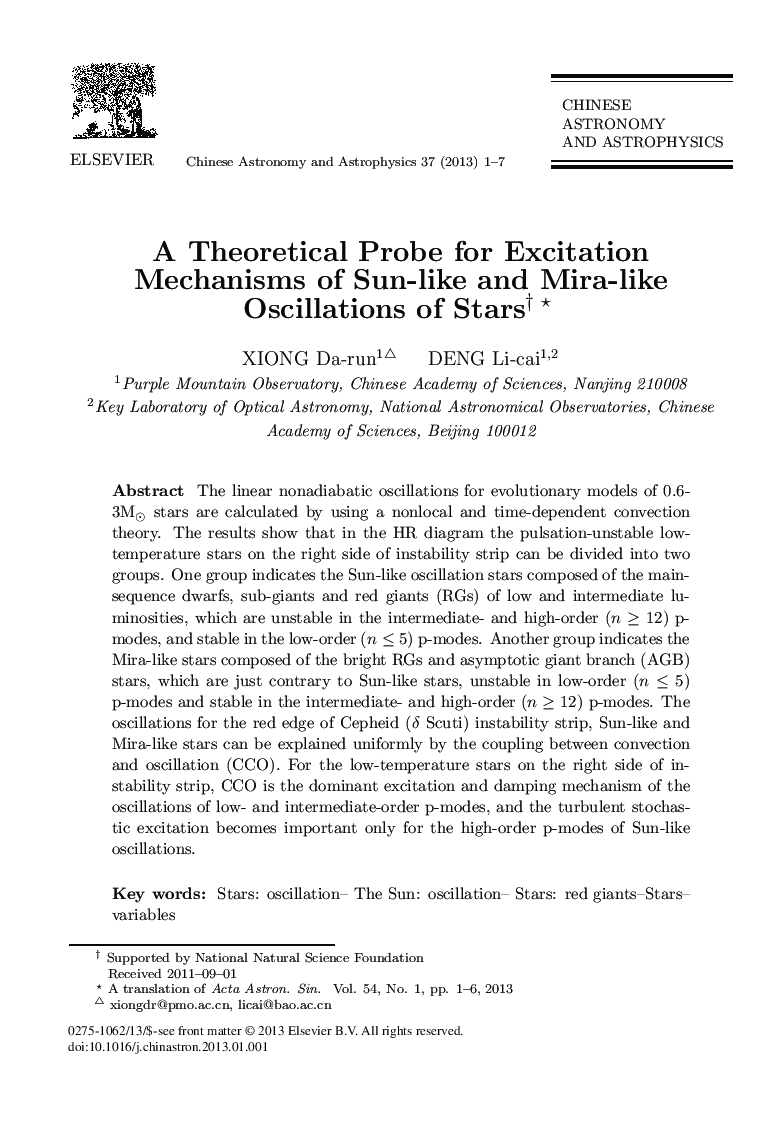| Article ID | Journal | Published Year | Pages | File Type |
|---|---|---|---|---|
| 1771745 | Chinese Astronomy and Astrophysics | 2013 | 7 Pages |
The linear nonadiabatic oscillations for evolutionary models of 0.6- 3M8 stars are calculated by using a nonlocal and time-dependent convection theory. The results show that in the HR diagram the pulsation-unstable low- temperature stars on the right side of instability strip can be divided into two groups. One group indicates the Sun-like oscillation stars composed of the main- sequence dwarfs, sub-giants and red giants (RGs) of low and intermediate lu- minosities, which are unstable in the intermediate- and high-order (n ≥ 12) p- modes, and stable in the low-order (n ≤ 5) p-modes. Another group indicates the Mira-like stars composed of the bright RGs and asymptotic giant branch (AGB) stars, which are just contrary to Sun-like stars, unstable in low-order (n ≤ 5) p-modes and stable in the intermediate- and high-order (n ≥ 12) p-modes. The oscillations for the red edge of Cepheid (δ Scuti) instability strip, Sun-like and Mira-like stars can be explained uniformly by the coupling between convection and oscillation (CCO). For the low-temperature stars on the right side of in- stability strip, CCO is the dominant excitation and damping mechanism of the oscillations of low- and intermediate-order p-modes, and the turbulent stochas- tic excitation becomes important only for the high-order p-modes of Sun-like oscillations.
